Twins in the Womb
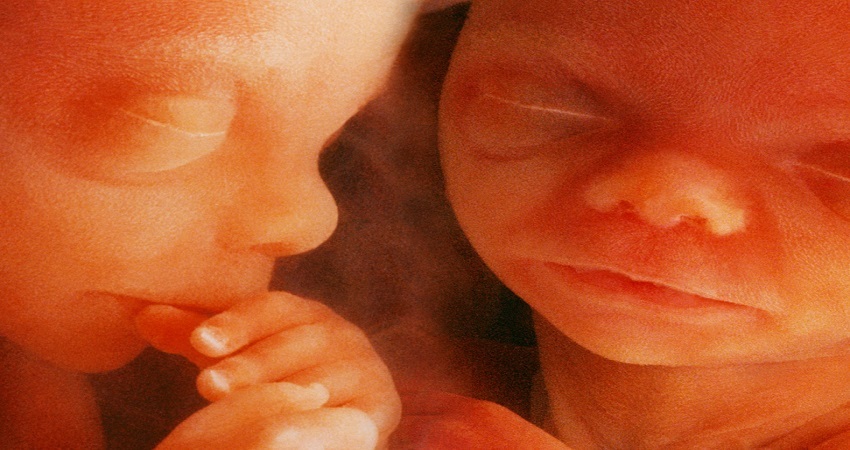
Unborn twins interact with each other as early as 14 weeks
Italian researcher Dr. Umberto Castiello of the University of Padova and associates used an advanced method of ultrasonography, which enables the movements of the babies to be recorded over time in 3D, to study five pairs of twins from a sample of low-risk pregnant women attending the Institute of Child Health I.R.C.C.S. Burlo Garofolo.
The purpose of the study was to see how twins interacted with each other in their mothers' wombs and to determine if the interaction was intentional or accidental.
"Newborns come into the world wired to socially interact," Dr. Castiello states in the preamble to the study report, then poses the question, "Is a propensity to socially oriented action already present before birth?"
Twin pregnancies provided the research team with a unique opportunity to investigate the social pre-wiring hypothesis. The researcher says...
Unlike ordinary siblings, twins share a most important environment – the uterus. If a predisposition towards social interaction is present before birth, one may expect twin fetuses to engage in some form of interaction
"Although various types of inter-twins contact have been demonstrated starting from the 11th week of gestation," Dr. Castiello said, "no study has so far investigated the critical question whether intra-pair contact is the result of motor planning rather then the accidental outcome of spatial proximity."
The five pairs of twins were studied during two separate recording sessions carried out at the 14th and 18th week of gestation.
The first 20-minute recording sessions showed the unborn twins touching each other as well as themselves, and the uterine wall.
During the second recording, four weeks later, their interest in their twin was approximately three times higher, with almost 30 per cent of movements directed towards the sibling. Those movements were also more accurate and of longer duration then self-directed ones, the researchers reported.
"We demonstrate that by the 14th week of gestation twin fetuses do not only display movements directed towards the uterine wall and self-directed movements, but also movements specifically aimed at the co-twin, the proportion of which increases between the 14th and 18th gestational week," the scientists stated.
The proportional increase in contact with the twin was reported to be consistent among the ten babies studied.
The researchers conclude that performance of movements towards the co-twin is not accidental.
"Starting from the 14th week of gestation twin fetuses plan and execute movements specifically aimed at the co-twin," the authors wrote, stating that "when the context enables it, as in the case of twin fetuses, other-directed actions are not only possible but predominant over self-directed actions." The findings provided quantitative empirical evidence that unborn babies are very much aware of their surroundings and of the presence of a twin with them in their mother's womb, said the researchers.
Source: Lifesitenews
Spanish twins join hands
In Mid-May 2013, twins born in Spain joined hands shortly after birth, and nurses recorded the moment!. The tender image of Daniel and Maria, together hand in hand from the first moment of their lives toured the world on social media.
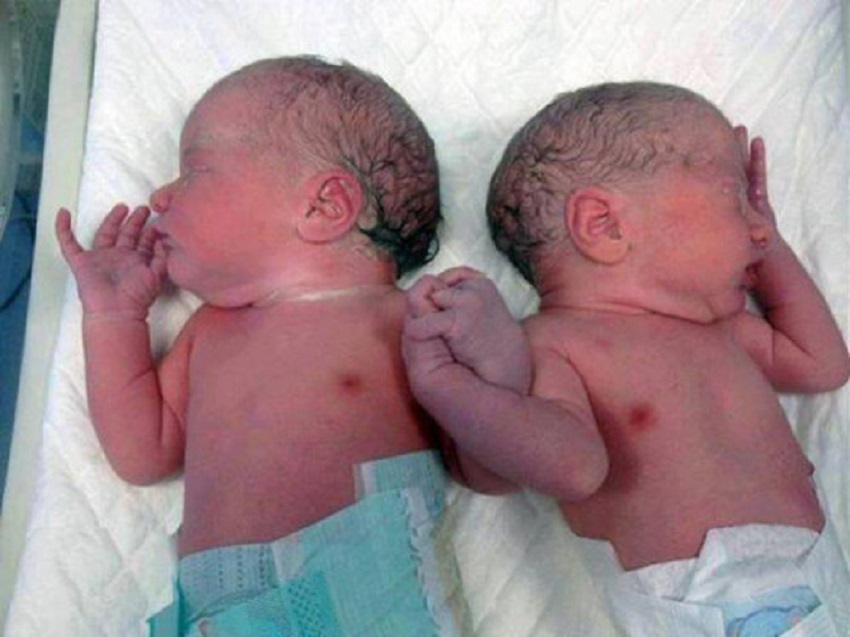
Brielle and Kyrie Jackson
Kyrie and Brielle Jackson were born on October 17, 1995, a full 12 weeks ahead of their due date. The standard practice, that time, at The Medical Center of Central Massachusetts in Worcester, where the twins came into the world, was to place them in separate incubators in order to reduce the risk of infection. Both babies were placed in separate incubators, a standard practice to reduce the risk of cross-infection. Kyrie, who weighed 2lbs 3 oz, was making good progress and gaining weight, but her tiny sister had breathing and heart-rate problems, there was little weight gain and her oxygen level was low.
On November 12, tiny Brielle went into critical condition. Her stick-thin arms and legs turned bluish-gray as she gasped for air. Her heart rate soared. The Jackson parents watched, terrified that their little daughter might die.
It is said that desperate moments call for desperate measures. Nurse Gayle Kasparian, after exhausting all the conventional remedies, decided to try a procedure that was common in parts of Europe but virtually unknown in the United States. With parental permission, she placed the twins in the same bed. No sooner had she closed the incubator door, Brielle snuggled up to Kyrie and began to calm down. Within minutes, her blood-oxygen readings improved. As she dozed, Kyrie wrapped her left arm around her smaller sister. Brielle's heart rate stabilized and her temperature rose to normal.In due time, the twins went home. Their parents placed them, once again, in the same bed where they continued to thrive. Even after five years, according to mom and dad, the twins still slept together and, not surprisingly, still snuggled.
The photograph of Kyrie hugging her little sister, dubbed the "Rescuing Hug," appeared in both Life magazine and Reader's Digest. It brought fame to the pair and spurred a growing interest in co-bedding premature twins, triplets, and quads. The University of Massachusetts Memorial, for example, has co-bedded at least 100 sets of multiple birth preemies. Observing this practice over a period of five years, the hospital staff there has not found a single case of twin-to-twin infection. In addition, clinical studies have shown that premature twins enjoy substantial benefits when they are placed in the same bed together.
One researcher, Mary Whalen, reports the following benefits:
- Decreased number of apnea problems
- Improved blood-oxygen levels
- Increased weight gain
- Better feeding
- Greater temperature regulation
- Decreased agitation
- Decreased length of hospital stays and likelihood of re-admission
- Little Kyrie's hug encircles every one of us, reminding us in the most gentle of manners that we are called to participate through love in the lives of all our neighbors.
15 Years Later
Mom delivers rare set of mono mono identical twin girls
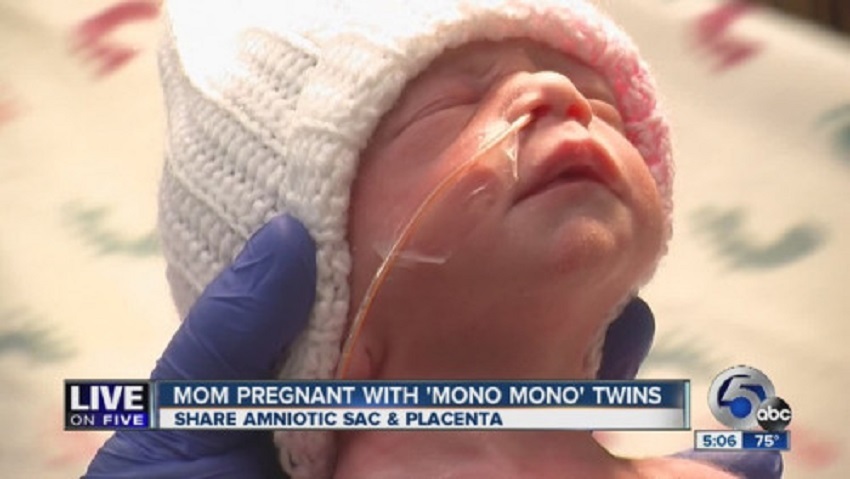
When Sarah Thistlethwaite and her husband, Bill, went for their third ultrasound in the couple's 19th week of pregnancy, they received a double dose of surprising news."The ultrasound tech said, 'Oh, there's two.' And my husband said, 'Two what?'" Sarah recalled.
The Thistlewaites, who were once told they probably wouldn't be able to have children, suddenly learned they were having identical twin girls. On top of that, the babies were rare mono mono twins-- a pregnancy in which twins share the same placenta and amniotic sac.
The two little girls came out holding hands!
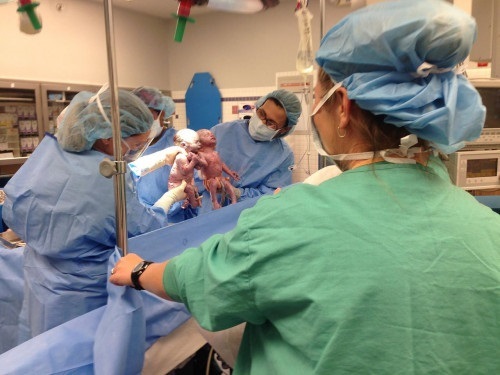
Twins born 3 weeks apart
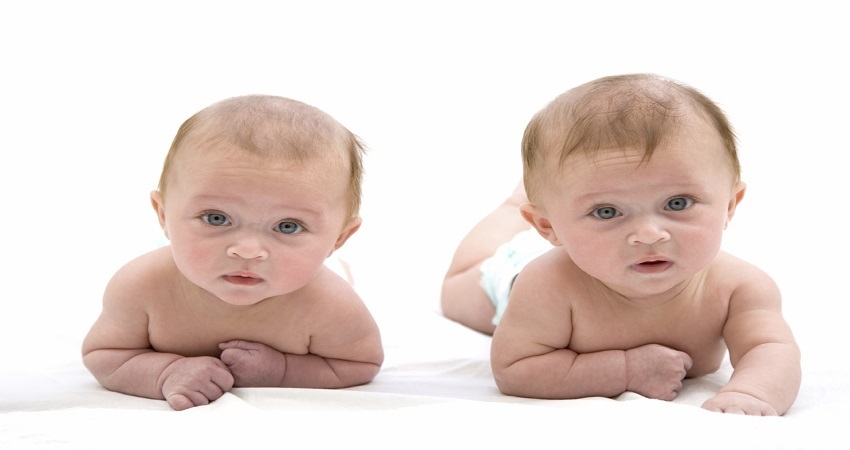
They are twins, but they don't share a birthday. In fact Alexandre is more than three weeks older than his brother Ronaldo. But both boys are thriving after a rare and risky delayed delivery that has exceeded every expectation.